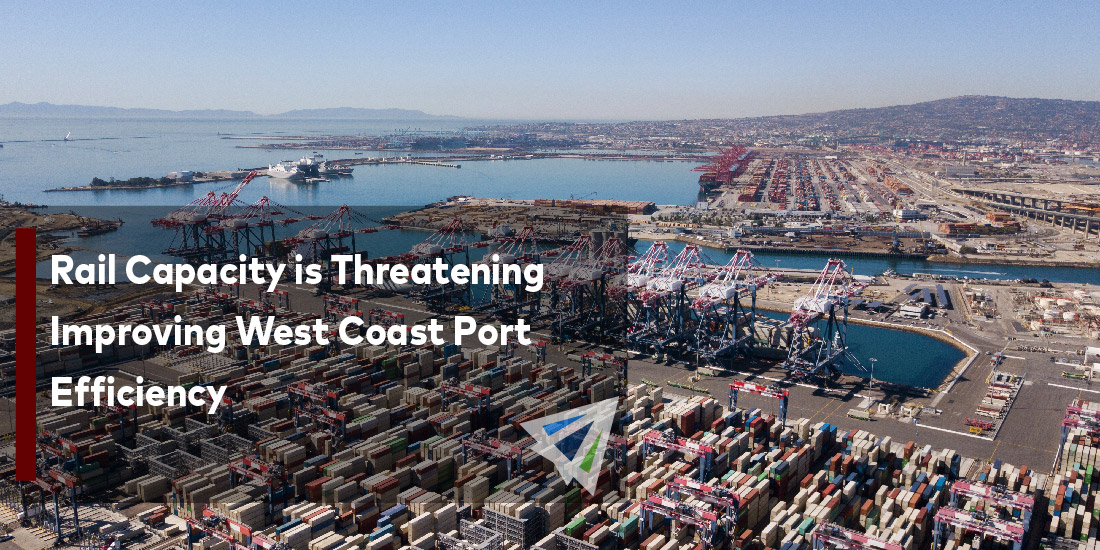Rail Capacity is Threatening Improving West Coast Port Efficiency
There’s always one bottleneck or another at the southern Californian ports of Long Beach and Los Angeles. At least that’s been the narrative the last several years. While things have recently taken a turn for the better in terms of cargo flow and congestion, port officials fear that dwell times for rail-bound containers may threaten the current pace of cargo movement out of the west coast ports.
The U.S. west coast ports feel they are at a better vantage point to deal with early peak season traffic as imports ramp up for U.S. buyers. However, the improvements made to the port grounds and marine terminals to increase efficiency may be overshadowed by the increasing dwell times due to rail capacity and equipment shortages.
The average dwell time of rail containers was 7.7 days in March, but had climbed to 9.6 days in April and is expected to continue increasing. But that couple-day increase in dwell time isn’t the issue. Already, dwell times are nearly three times higher than they need to be in order to maintain port fluidity. It’s not only hitting Los Angeles and Long Beach. Oakland, Seattle, and Tacoma are suffering incredibly high rail dwell times as well.
The Causes of Rail Container Delays
There are several reasons that containers are mounting at rail yards ranging from capacity issues to equipment shortages and several things in between. Firstly, it’s taking shippers significantly longer than usual to return chassis to marine terminals, which is putting undue stress on port grounds as they struggle to clear rail containers out to make room for new cargo.
Secondly, there is a major shortage of rail cars, power, and staff to operate the intermodal channels. And thirdly, the west coast is continuing to experience massive chassis shortages (largely due to bottlenecks on the inland transportation side). A port official at Los Angeles stated that if BNSF Railway would deploy more capacity to the ports, that long-dwelling containers could be cleared out as soon as two weeks. However, staffing shortages and rail car shortages make that a near-impossible feat.
Lastly, while truck turn times have certainly improved in recent months, they are still much higher than the 60-minute standard the Harbor Trucking Association (HTA) is trying to achieve. While the goal time has been 60-minutes, truck turn times are sitting roughly at 90-minutes – 50 percent higher than they want.
Improvements Being Made
BNSF has made recent statements indicating major improvements in their supply chain and staffing. The railway already hired an additional 400 employees in recent months, with over half already having completed their training and the other half expected to in the coming three months. However, BNSF is currently planning to add an additional 3,000 employees this year, ranging from mechanical and dispatch teams, to train, yard, and engine members.
Port officials have said that these staffing improvements for rail carriers will make an almost immediate impact on rail container dwell times. Luckily, the reduction in import activity as a result of the lockdowns in Shanghai and Shenzhen has offered serious relief to the ports of Los Angeles and Long Beach. But as it’s been stated before, this congestion relief is expected to be short-lived. The hope is that by the time activity is resumed in Asian ports, improvements are made to U.S.-based intermodal channels to avoid gridlocks at the port grounds.
If you would like more information regarding this topic, contact our team at InterlogUSA and we will be happy to assist you on any questions or comments you may have! In addition, we have our weekly market updates that can provide you with relevant freight news, updates, developments across the industry, and more.
